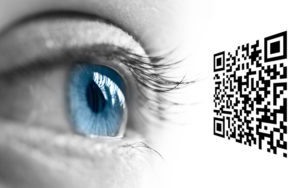
In this new day and age technology, a barcode is a system that represents visual data that is readable by scanning machines. Barcodes, initially, was represented with a range of spaces and sizes of parallel lines. Now there are 2D barcodes that are represented through matrix codes. The matric code is a combination of dots and shapes, a geometric pattern. There are no “bars” in 2D barcodes.
Barcodes can be described as optical morse codes. They are a series of linear or geometrical patterns that uniquely labels products, individually. These barcodes can be decoded through barcode scanners. These scanners emit a red light that reads the barcode and transmits the data stored in a system or a computer.
Barcodes have now become an essential part of almost every Brick and Mortar Company. You will rarely find a product without a barcode Tag. Different types of barcodes are used for different purposes in business sectors. There are several advantages of using barcodes as compared to manual data entry.
There are several reasons to prefer Barcodes over manual data entry. Following are some of the advantages of barcodes over manual data entry:
Many retailers use barcodes for inventory control, it is essential to the success of the company. Through the retail barcode system, companies can manage their inventory cycle counts, point-of-sale checkouts, sales analysis, and purchases. The efficiency and methodology of barcodes help a business stay ahead of their game.
There are two major types of barcodes:
2D barcodes are a combination of patterns consisting of squares, dots, rectangles, etc. While appearing smaller physically, 2D barcodes have the capacity to hold a larger amount of data. This plays a key role in the advantages of 2D barcodes as it can hold up to 2000 characters. However, this is also a setback because it makes scanning and reading of data all the more complex and difficult.
Linear barcodes are usually found on products or consumer goods. A series of lines are used to encode information when scanned. It is read horizontally. The advantages of linear barcodes are enjoyed by large retail sectors, as it saves time and increases inventory accuracy. The length of this type of bar code is directly proportionate to the amount of information it holds. This is one of the major disadvantages of linear barcodes, users are forced to put a limit of 8-15 characters in the barcodes.
Linear barcodes are commonly referred to as first-generation barcodes. These barcodes consist of vertical lines at specific gaps resulting in a particular pattern. Hardware scanners are used to scan these patterns and decode the information stored in those particular patterns. These barcodes are also commonly called discrete, one dimensional or UPC barcodes. The examples of linear barcodes are Code 39, EAN-8, EAN-13, EAN 128, UPC-E, UPC-A, ISBN, etc.
Companies utilize barcodes for efficiency in their business flow. It provides a system to store and track information about the goods and services provided. Barcodes give you the capacity to maintain individual data about a product that is manufactured in hundreds of millions. By and large, choosing a barcode depends on many factors. Your selection comes down to your industry’s regulations, requirements, and expectations.
Understanding the character set that will support your business needs. Linear barcodes have utilization in product-oriented industries. Where these products are sent to various destinations. They can be scanned online with a handheld scanner. Linear barcodes boost efficiency in the retail sector.
Whereas, 2D barcodes are helpful in tracking products. 2D barcodes can be scanned by various individuals through their own devices. It helps in quick identification of data. The Linear barcodes can be scanned by barcode readers, which is the marked optical scanner. 2D barcodes of the other hand can be read through application software on devices with an inbuilt camera, like mobile phones.
2D barcodes are more complex and store data in the form of a matrix or stack. Stacked 2D barcodes contain data in the form stacks of linear barcodes whereas matrix 2D barcodes store data in the form of hexagonal, square, or circular cells. They can store data in both vertical and horizontal directions.
bytescout.com Barcode Generator and Barcode Reader SDK
If you want to take benefits from the capabilities if the barcode and want to generate linear and 2D barcodes, you should definitely check our BarCode Generator SDK. It contains amazing barcode generation capabilities both for linear and 2D barcodes. Similarly, if you want to scan and read barcodes from pictures, PDF, TIFF files or web camera – check our BarCode Reader SDK”